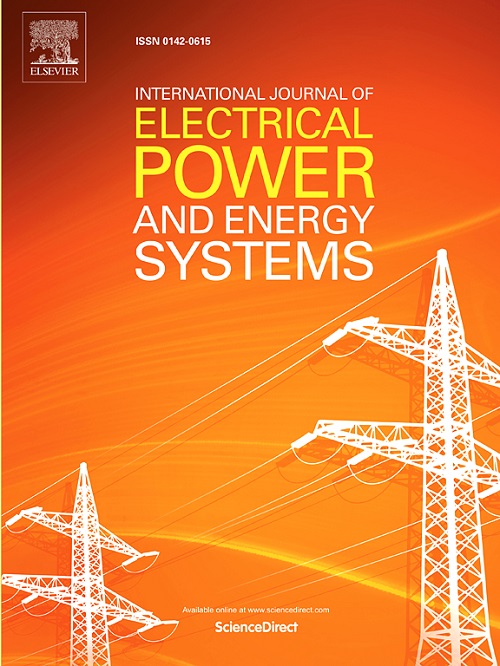Cooperative trading and optimization scheduling of multi-microgrid considering controllable air conditioning load virtual energy storage
IF 5
2区 工程技术
Q1 ENGINEERING, ELECTRICAL & ELECTRONIC
International Journal of Electrical Power & Energy Systems
Pub Date : 2025-09-22
DOI:10.1016/j.ijepes.2025.111168
引用次数: 0
Abstract
Controllable air conditioning load, as a flexible load scheduling resource, has become a crucial component of demand response mechanisms in distribution networks. However, the dynamic variation of the user’s comfort interval and the time-delay effect of air conditioning loads reduce the accuracy and timeliness of the scheduling process. Therefore, this paper proposes a cooperative trading and optimization scheduling approach for multi-microgrids, considering controllable air conditioning load virtual energy storage. Firstly, based on the dynamic variation of the optimal comfort temperature for the human body, the Quantile Regression Neural Network algorithm is employed to predict the dynamic comfort interval of the human body. Secondly, an electric-thermal coordinated scheduling strategy accounting for the synchronous response characteristics of thermal inertia is proposed, and the virtual energy storage model for variable-frequency air conditioning load is established. Subsequently, the multi-microgrids energy optimization scheduling system is constructed. The system consists of two subproblems: Subproblem 1 aims to minimize the total operating cost of the multi-microgrids, while Subproblem 2 seeks to maximize the cooperative benefits of the multi-microgrids. The Adaptive Accelerated Alternating Direction Method of Multipliers algorithm is employed to solve the problem. Finally, a case study simulation is conducted using multi-microgrids in Liaoning Province. The results demonstrate that, compared to traditional methods, the proposed multi-microgrids system reduces operating costs by 45.1 % and improves solution speed by 33.8 %.
考虑可控空调负荷虚拟储能的多微网协同交易与优化调度
可控空调负荷作为一种灵活的负荷调度资源,已成为配电网需求响应机制的重要组成部分。然而,用户舒适区间的动态变化和空调负荷的时滞效应降低了调度过程的准确性和时效性。为此,本文提出了一种考虑可控空调负荷虚拟储能的多微电网协同交易与优化调度方法。首先,基于人体最佳舒适温度的动态变化,采用分位数回归神经网络算法预测人体动态舒适区间;其次,提出了考虑热惯性同步响应特性的电-热协同调度策略,建立了变频空调负荷的虚拟储能模型;随后,构建了多微电网能量优化调度系统。该系统由两个子问题组成:子问题1旨在使多微网的总运行成本最小化,子问题2旨在使多微网的合作效益最大化。采用自适应加速交替方向乘法器算法求解该问题。最后,以辽宁省多微电网为例进行了仿真研究。结果表明,与传统方法相比,所提出的多微电网系统运行成本降低45.1%,求解速度提高33.8%。
本文章由计算机程序翻译,如有差异,请以英文原文为准。
求助全文
约1分钟内获得全文
求助全文
来源期刊
CiteScore
12.10
自引率
17.30%
发文量
1022
审稿时长
51 days
期刊介绍:
The journal covers theoretical developments in electrical power and energy systems and their applications. The coverage embraces: generation and network planning; reliability; long and short term operation; expert systems; neural networks; object oriented systems; system control centres; database and information systems; stock and parameter estimation; system security and adequacy; network theory, modelling and computation; small and large system dynamics; dynamic model identification; on-line control including load and switching control; protection; distribution systems; energy economics; impact of non-conventional systems; and man-machine interfaces.
As well as original research papers, the journal publishes short contributions, book reviews and conference reports. All papers are peer-reviewed by at least two referees.

 求助内容:
求助内容: 应助结果提醒方式:
应助结果提醒方式:


